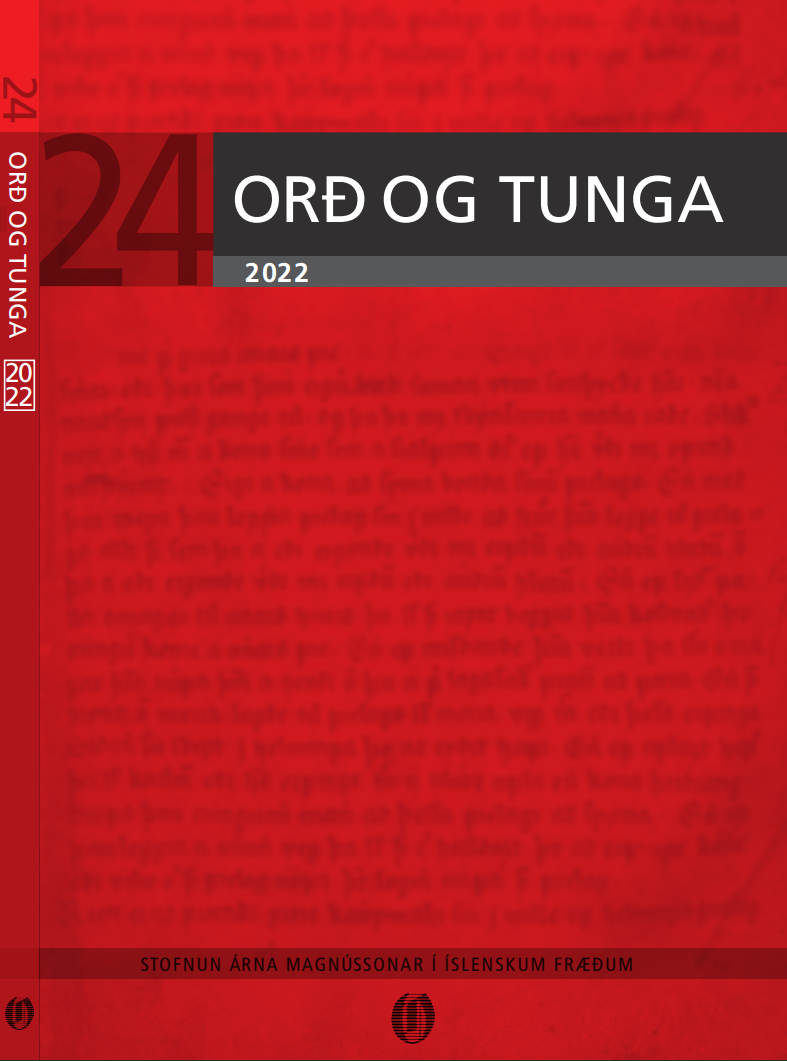Samræmi við hulin nafnorð
DOI:
https://doi.org/10.33112/ordogtunga.24.3Útdráttur
This article discusses a somewhat peculiar “agreement” in Icelandic. In (i) we see such an agreement between the subject, on the one hand, and the finite verb and the predicate, on the other.
(i) Englar alheimsins er komin út á ensku.
angels.masc.pl of.the.universe is.sg published.fem.sg in English
‘Angels of the Universe has been published in English.’
Interestingly, the head of the subject is in the masculine plural while the finite verb is in the singular and the predicate in the feminine singular. Normally we would have expected the agreement to be as shown in (ii), with the verb and the predicate in the plural and the gender on the latter to be masculine.
(ii) Eru englar ódauðlegir?
are.pl angels.masc.pl immortal.masc.pl
‘Are angels immortal?’
What is crucial for the agreement pattern in (i), however, is that Englar alheimsins is the title of a book. Even though the noun bók ‘book’ is not visible it seems to directly affect the agreement. In fact, we argue in the article that the structure in examples like (i) contains a concealed or elided noun with which finite verbs, predicates, attributive adjectives, etc., can agree. Such nouns are often found in noun phrases that signify,
e.g., titles or proper names that are fairly long, and also in noun phrases that contain foreign words that do not inflect, such as Liverpool or Radiohead. We compare this type of agreement with semantic agreement, such as in (iii), and so-called restaurant talk, as in (iv)
(iii) Krakkarnir eru þreytt.
the.kids.masc.pl are tired.neut.pl
‘The kids are tired.’
(iv) Ég keypti tvo kaffi.
I bought two.masc coffee.neut
‘I bought two cups of coffee.’
We conclude that the agreement of the type in (i) resembles restaurant talk which also seems to involve a concealed noun. We do not, however, argue that semantic agreement contains a concealed noun.


